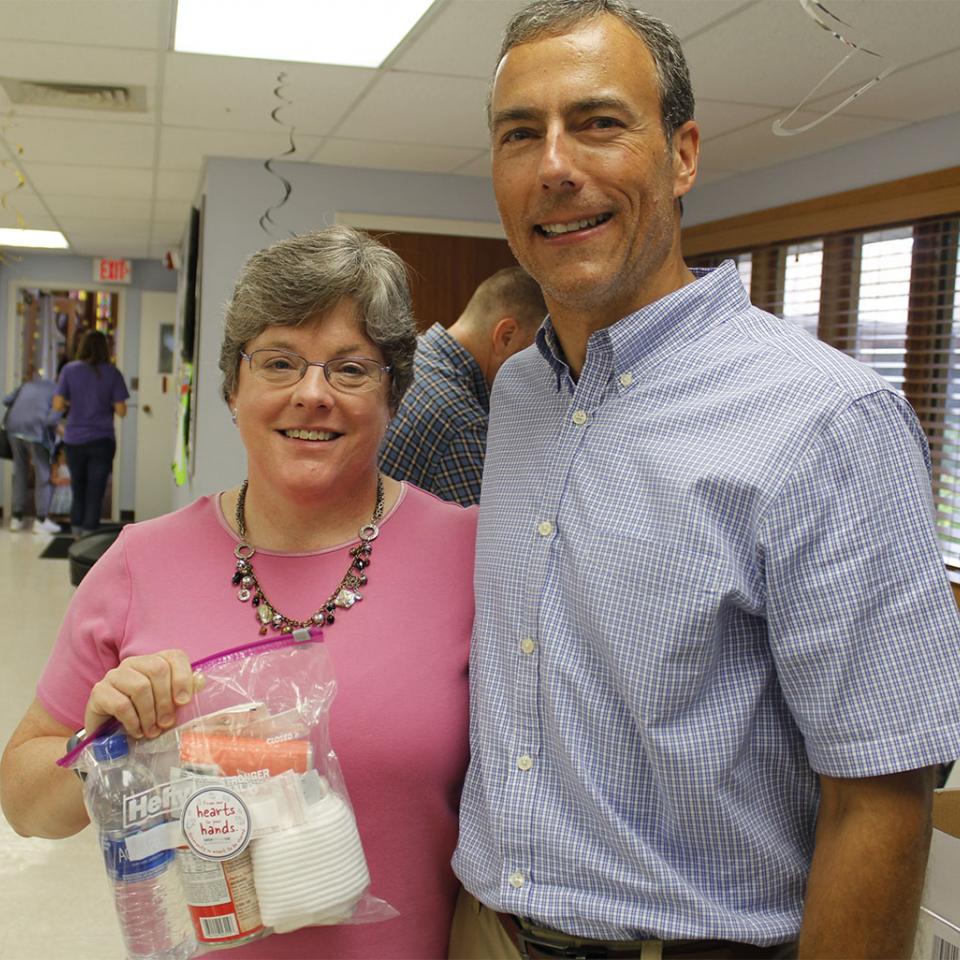An artist, gamer, and movie lover, Curtis McLaughlin (above) has been part of the Health Care for the Homeless Art Group for more than five years.
Art is one of my coping skills. I can be anywhere and create art wherever I go.


07.17.18
Board member Eric Wendler shares one simple way to care for neighbors experiencing homelessness.
Q: Help doesn’t always come in the form of money. Sometimes it’s food, water or simply a smile. During these hot summer months, how do you help?
Five or six years ago, our church (Calvary Lutheran) started making Grace Bags. We ask for food and toiletries year-round. And every three months, children and youth from the congregation come together to assemble the bags. We keep a little basket of Grace Bags by the door so folks can take a few with them in their car and give them out at intersections.
Q: What’s in a Grace Bag?
A Grace Bag is a big Ziploc bag full of things like body wash, band-aids, hand sanitizer, water and canned food. We also include an item of clothing – either socks, a t-shirt or gloves (in the winter). And we include a sticker of encouragement on the outside of the bag. The bags we made this summer say, “Made with love.”
Q: Where did this idea come from?
I got the idea from a congregation in Texas. Not everyone feels comfortable giving out money, but they want to do something to help. I was already giving out water bottles and crackers from my car. I thought, “What can we do to get the whole community involved?”
Q: How do people respond to Grace Bags?
The sense of gratitude is remarkable. When you’re giving someone food, supplies, clothing—there’s something so personal about that. That shows you’re concerned about their well-being. Every day, I see one or two people. I roll down my window and say, “God bless you. I hope this helps.” Most people give me a big smile and say, “God bless you.”
Q: What do you hope to accomplish?
We hope that the resources in these bags will give each person energy, show them that we care and acknowledge that they are important. Maybe a little boost like that will make a difference.
Interested in making your own bags? Take a look at some of the things we put in our survival kits for inspiration!
An artist, gamer, and movie lover, Curtis McLaughlin (above) has been part of the Health Care for the Homeless Art Group for more than five years.
Art is one of my coping skills. I can be anywhere and create art wherever I go.
Client storytelling is a staple of the nonprofit business model, ever present in advocacy, clinic tours, fundraising—and news articles like the one you are reading right now.
The Trans Rights Advocacy Coalition (TRAC) has been the driving force in championing trans rights policy changes in Maryland. Due to stigma and structural discrimination, transgender people—particularly transgender people of color—experience high rates of homelessness. Following the implementation of the Trans Health Equity Act in January, we talked with TRAC leadership about their work and community.
Since starting in January 2022, REI Health Specialist Arie Hayre-Somuah, LMSW, MPH has worked with our clinical teams to identify health disparities and move us closer to health equity. This year, she is turning her focus to the topic of health literacy.